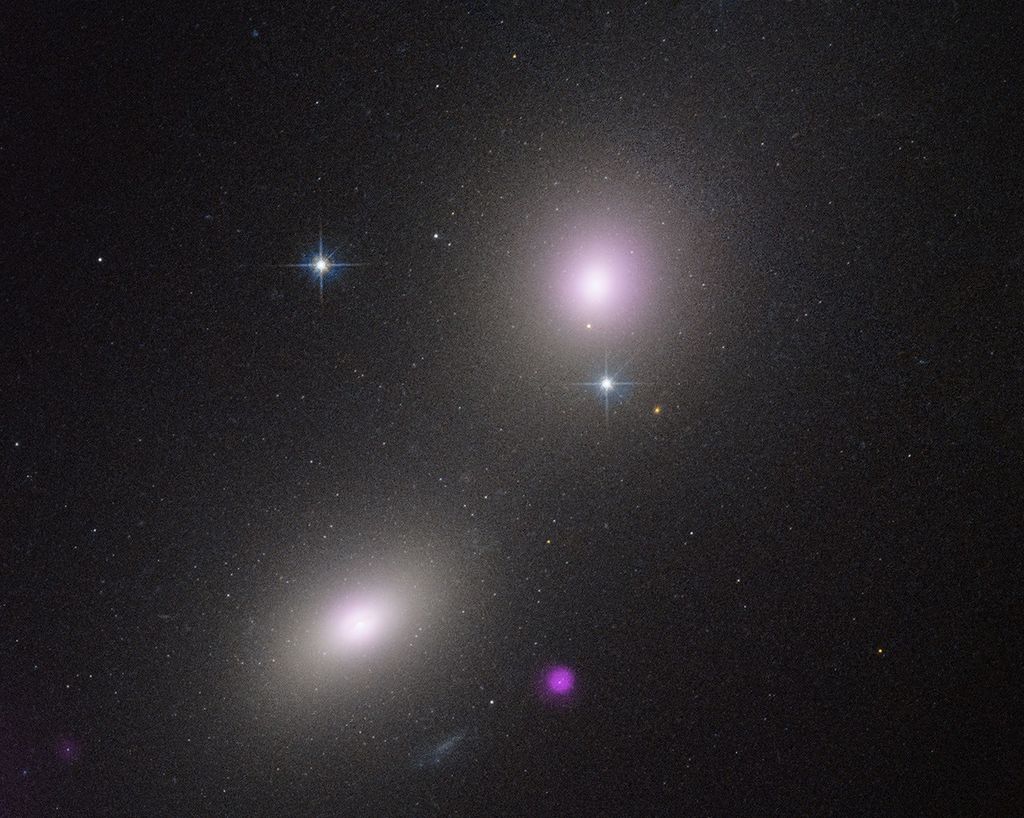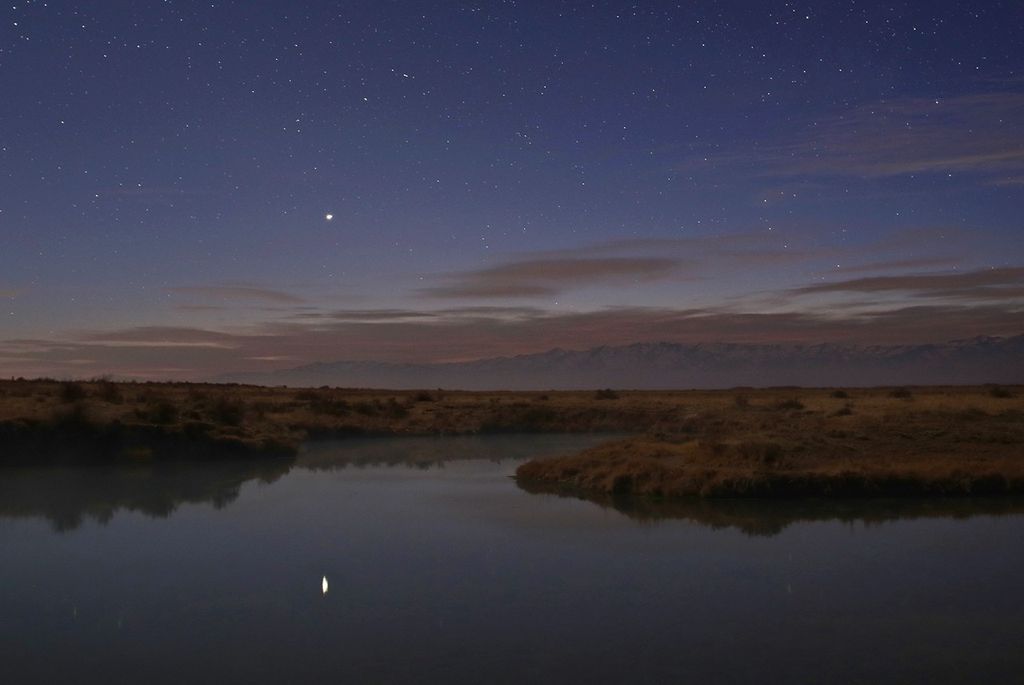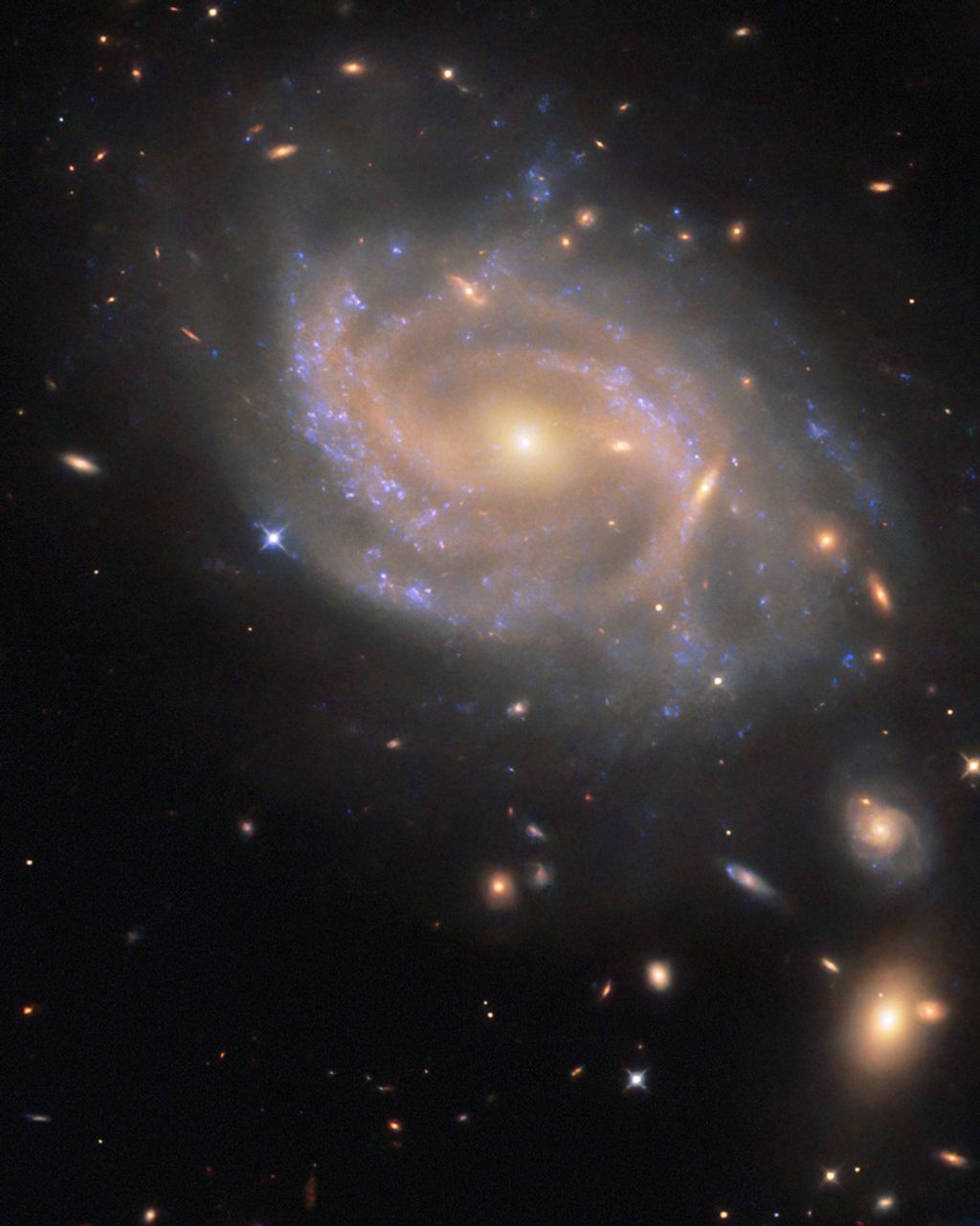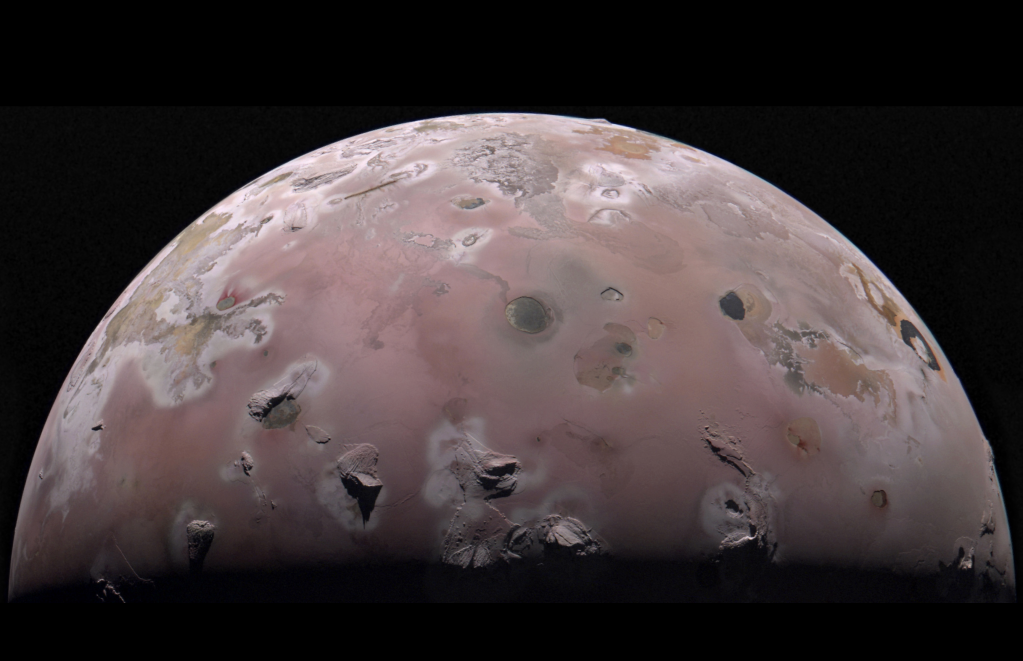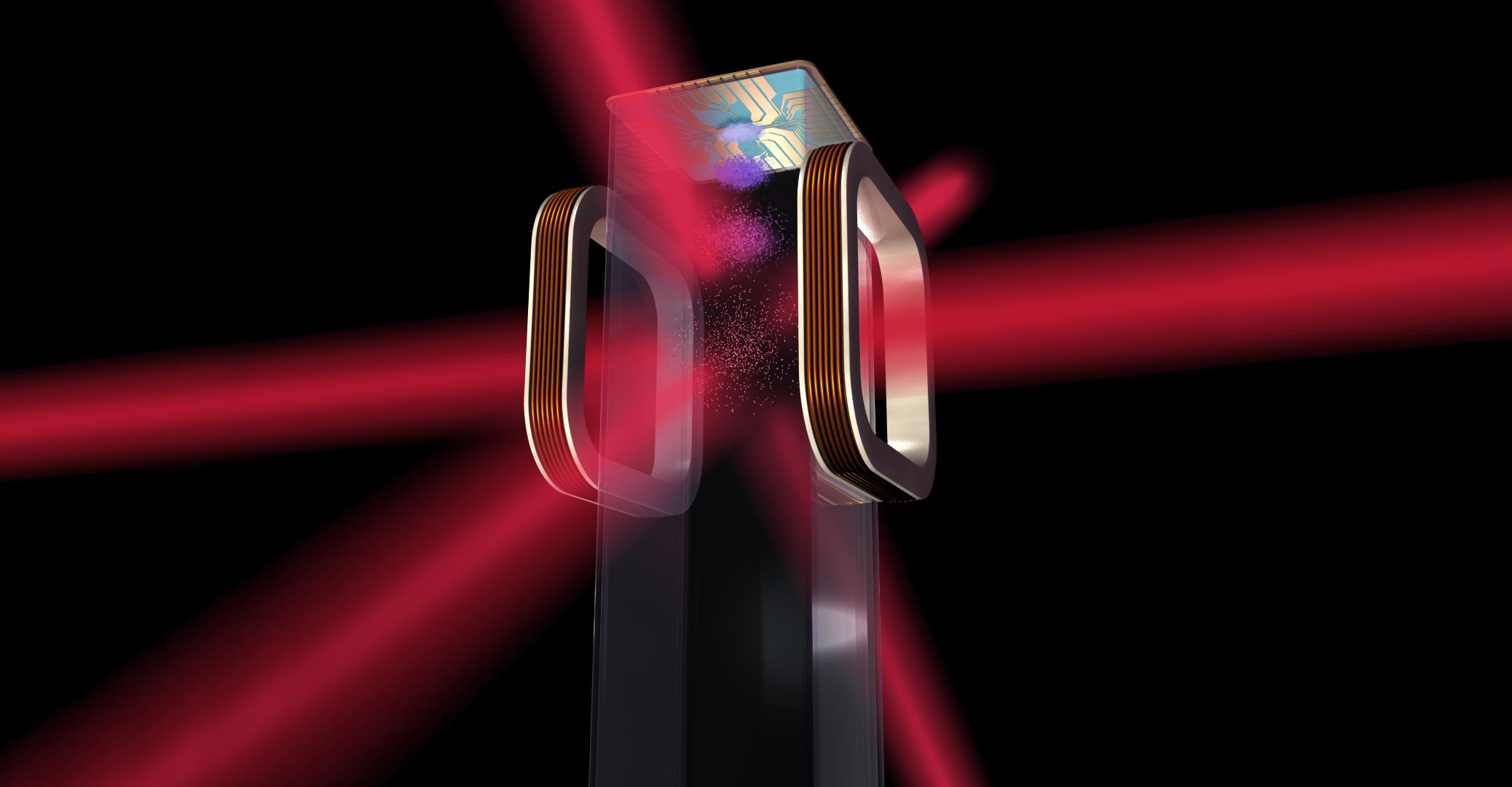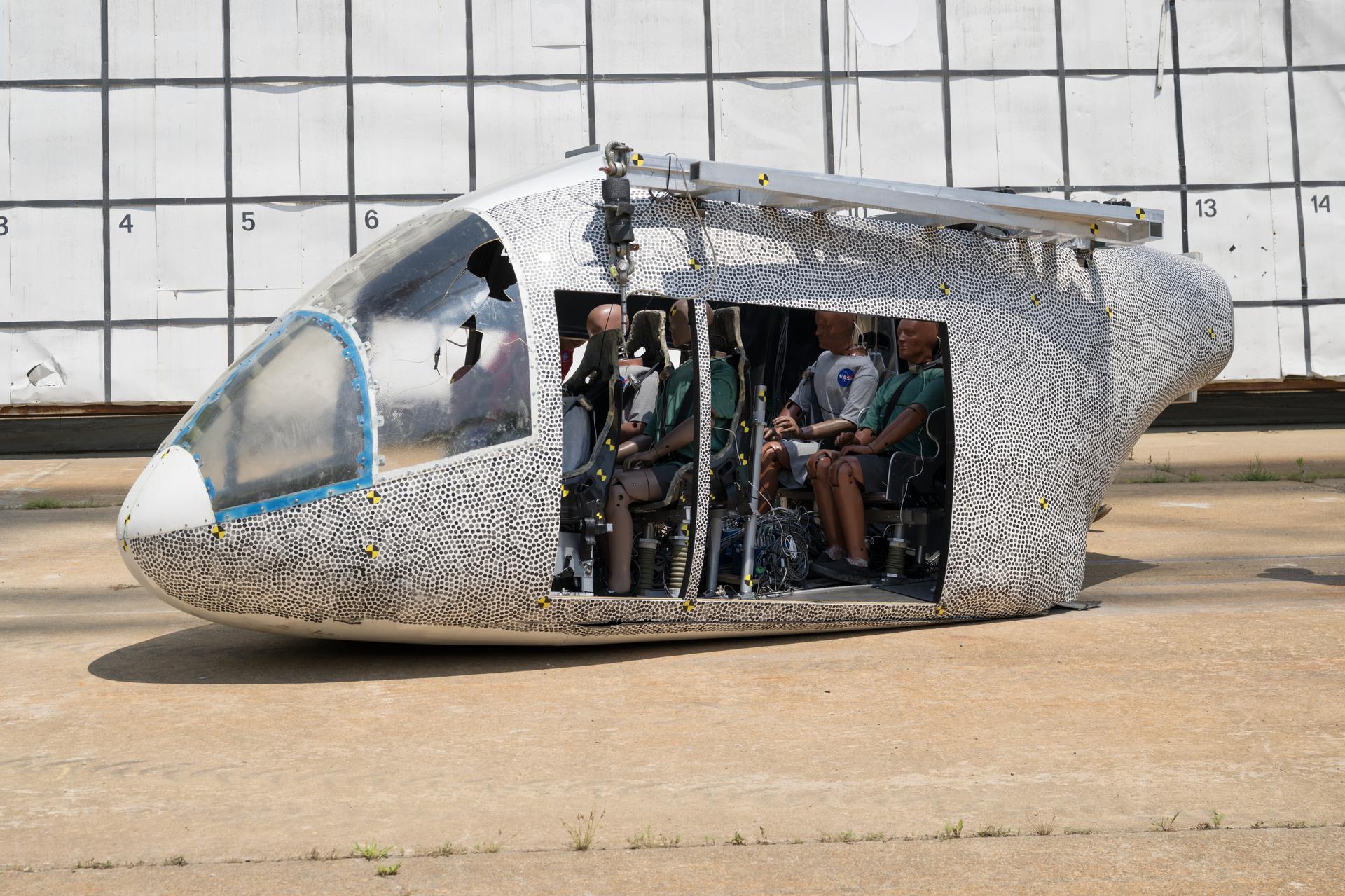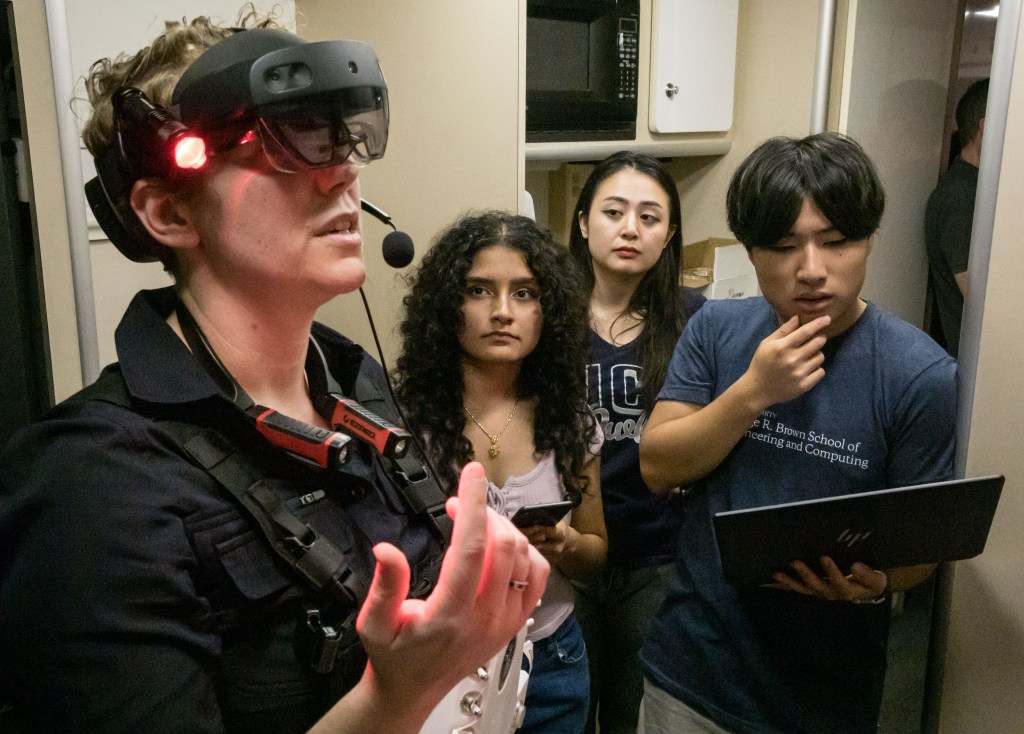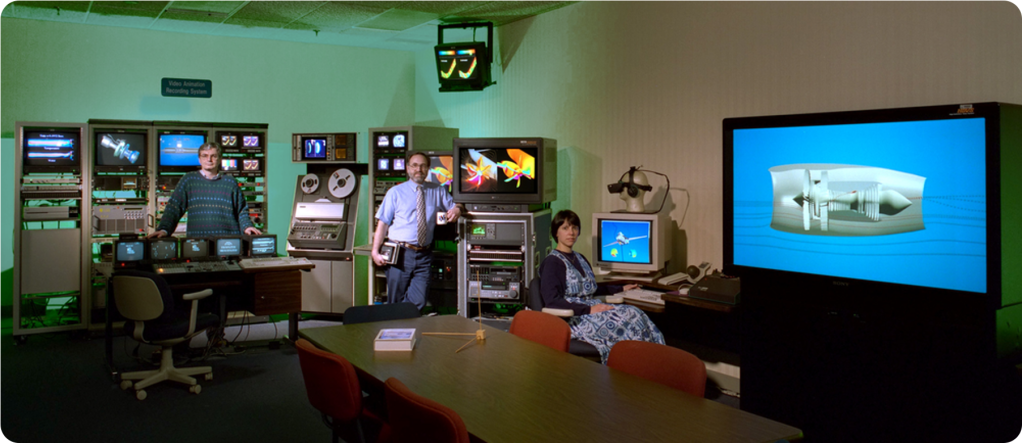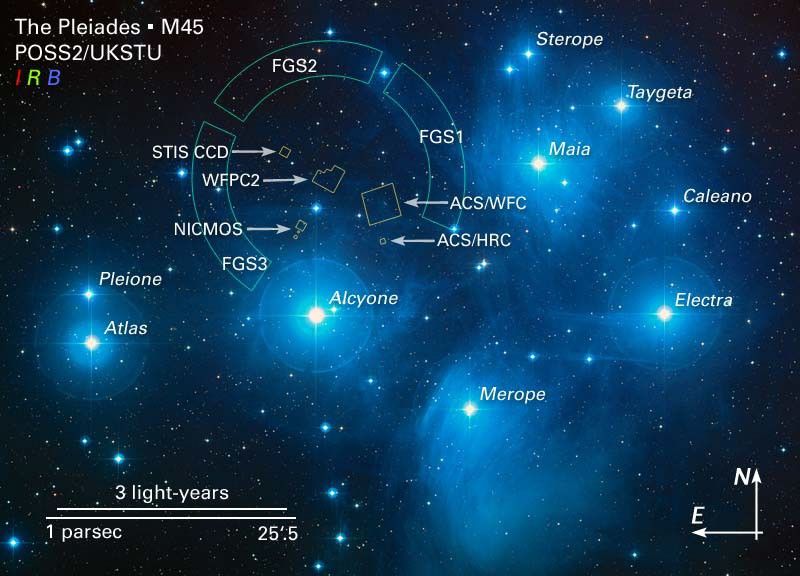1 min read
Hubble Refines Distance to the Pleiades Star Cluster

The brilliant stars seen in this image are members of the popular open star cluster known as the Pleiades, or Seven Sisters. The Hubble Space Telescope's Fine Guidance Sensors refined the distance to the Pleiades at about 440 light-years. The Fine Guidance Sensors are at the periphery of Hubble's field-of-view. They trace a circumference that is approximately the angular size of the Moon on the sky. They are overlaid on this image to give a scale to Hubble's very narrow view on the heavens.
Hubble Fine Guidance Sensors measured slight changes in the apparent positions of three stars within the cluster when viewed from different sides of Earth's orbit. Astronomers took their measurements six months apart over a 2 1/2-year period. About 1,000 stars comprise the cluster, located in the constellation Taurus.
The color-composite image of the Pleiades star cluster was taken by the Palomar 48-inch Schmidt telescope. The image is from the second Palomar Observatory Sky Survey, and is part of the Digitized Sky Survey. The Pleiades photo was made from three separate images taken in red, green, and blue filters. The separate images were taken between Nov. 5, 1986 and Sept. 11, 1996.
About the Object
- R.A. PositionR.A. PositionRight ascension – analogous to longitude – is one component of an object's position.03h 46m 59.99s
- Dec. PositionDec. PositionDeclination – analogous to latitude – is one component of an object's position.24° 7' 0.0"
- ConstellationConstellationOne of 88 recognized regions of the celestial sphere in which the object appears.Taurus
- DistanceDistanceThe physical distance from Earth to the astronomical object. Distances within our solar system are usually measured in Astronomical Units (AU). Distances between stars are usually measured in light-years. Interstellar distances can also be measured in parsecs.Approximately 400 light-years (120 parsecs)
About the Data
- Data DescriptionData DescriptionProposal: A description of the observations, their scientific justification, and the links to the data available in the science archive.
Science Team: The astronomers who planned the observations and analyzed the data. "PI" refers to the Principal Investigator. - InstrumentInstrumentThe science instrument used to produce the data.HST>FGS
- FiltersFiltersThe camera filters that were used in the science observations.Second Palomar Observatory Sky Survey (POSS2)/UKSTU (B), (R), and (I)
- Object NameObject NameA name or catalog number that astronomers use to identify an astronomical object.Pleiades, NGC 1432/35, M45
- Object DescriptionObject DescriptionThe type of astronomical object.Open Cluster
- Release DateJune 1, 2004
- Science ReleaseHubble Refines Distance to Pleiades Star Cluster
- Credit

Blue: POSS2/UKSTU (B) Green: POSS2/UKSTU (R) Red: POSS2/UKSTU (I)

Share
Details
Claire Andreoli
NASA’s Goddard Space Flight Center
Greenbelt, Maryland
claire.andreoli@nasa.gov

